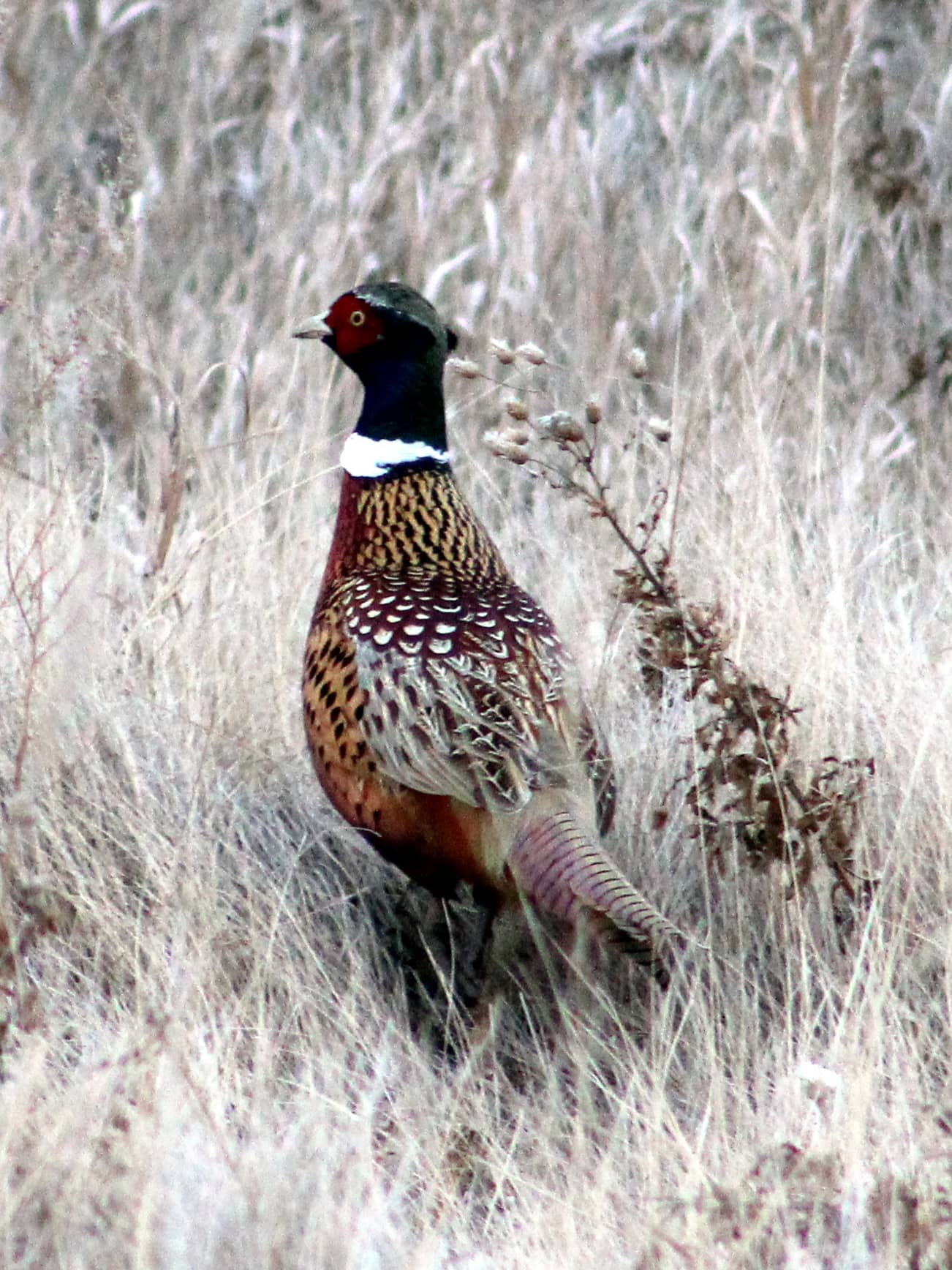
Hunters found better-than-expected bird numbers across all upland game species, but especially pheasants. The northwest and southwest corners of the state produced the best hunting as timely rains limited the drought’s impact on just-hatched birds, while many areas of North Dakota exhibited signs of a late hatch, especially with Hungarian partridge. Simonson Photo.
By Nick Simonson
This autumn, upland hunters found good success where habitat remained intact because it congregated birds in those locations.
In places throughout the state which received little rain and stands of grass grew shorter and sparser than normal, upland birds such as pheasants and sharptailed grouse were harder to come by. Add in the fact that emergency haying for livestock was authorized in the extreme drought conditions, many areas where much of the cover was mowed on a parcel hunters found their quarry in the limited remaining cover, according to RJ Gross, Upland Game Biologist with the North Dakota Game & Fish Department (NDG&F).
“Talking to people, a couple spots that really stuck out – and it came from our surveys too – that the northwest and southwest corners were very good, especially that northwest. It seemed like everyone I talked to up there did very well and there were plenty of pheasants,” Gross details, adding grouse hunters found birds, “in the southern badlands people were doing well, and another spot, in northern Burleigh County, it wasn’t like it has been in years past, but I think they still had enough production and you did have some young birds in the bag, and that was a bonus.”
Numbers were likely off a bit in the upland bird roadside brood counts conducted last summer by the NDG&F, approaching lows not seen since the summer of 1997 following a devastating winter which produced sustained, brutally cold temperatures and snow totals of more than eight feet across much of the state. Gross recognized that many sportsmen were seeing more pheasants this fall than the annual tally let on, in part due to dry conditions which did not force birds to the edges of gravel roads to be counted during the surveys. With the lack of dew during the August survey, there was little need for adult and juvenile roosters to come into the open and dry off, as a result, hunters saw more birds when in the field in relation to the totals surveyors came up with on the routes.
“I think [the pheasant season] turned out better than expected. I’m glad to be wrong when there are more pheasants than what our survey showed for people instead of the other way. It seems I can be wrong that way,” Gross concludes with a laugh on the survey versus season results.
In addition to the roadside survey, other vital monitoring processes help the agency estimate bird populations, hunter success, and survival through the winter. Up next is the winter sex survey, where NDG&F agents travel the countryside, counting the number of rooster and hen pheasants which are more easily identified against a background of white.
In addition to those activities, the NDG&F is sending out small game surveys to between 4,000 and 5,000 hunters licensed in the fall of 2021. Those individuals complete the surveys with days hunted for upland birds, waterfowl and other small game species during the autumn, with an estimate of the number of birds they harvested. That in turn helps the NDG&F estimate the total number of pheasants taken, along with other small game and waterfowl in the state.
Additionally, Gross and other NDG&F biologists have completed a review of a majority of the submitted wings from sharptailed grouse and Hungarian partridge, and are starting on those pheasant wings hunters turned in to the department during the season. Through these submissions, Gross stated he is able to take a wing identified to be from a juvenile upland bird, and through examination of its characteristics, determine down to the week that particular bird hatched. This season’s sampling of grouse and partridge wings are pointing to a very late occurrence, with some hatching as late as August. It’s likely too that many pheasants held off on nesting until mid-summer, with some early rooster wings telling a similar tale.
“We’re starting to do a few of the hunter harvested wings that are coming in for everything, and there was definitely a later hatch when we had a little bit more rain and better cover later in the season, it seemed birds really responded to that,” Gross explains, adding that partridge “were a very late hatch, we had some of those in mid-to-late-August for a lot of the ones that we have been aging, which is unusually late. We had a little bit more rain, the cover kind of turned green a little bit again as we got late into the nesting season and those partridge really responded.”
Results of the hunter success survey and an estimated total pheasant, grouse and partridge harvest from the fall of 2021 will be released this spring, ahead of the NDG&F crowing count survey which starts in May to coincide with the peak of crowing activity in the middle of that month.
